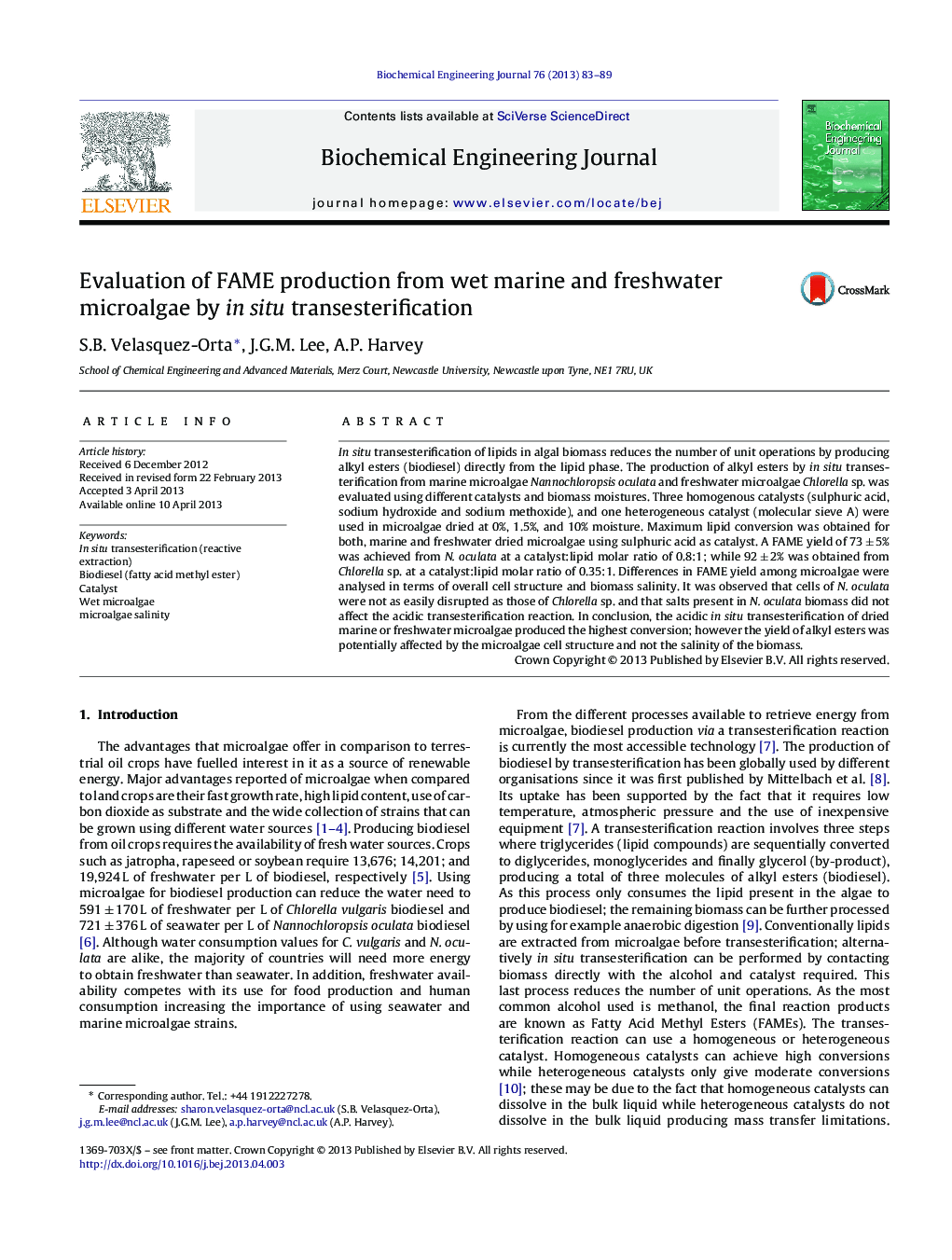| کد مقاله | کد نشریه | سال انتشار | مقاله انگلیسی | نسخه تمام متن |
|---|---|---|---|---|
| 3386 | 167 | 2013 | 7 صفحه PDF | دانلود رایگان |

• We evaluated the in situ transesterification of not completely dried microalgae using different catalysts.
• Maximum FAME conversion was obtained, for dried and 1.5%wet, marine and freshwater microalgae, when using sulphuric acid as catalyst.
• It was observed that the cell structure of Nannochloropsis oculata was not as disrupted as those of Chlorella sp.
• In conclusion, the acidic in situ transesterification produced the highest conversion; however the yield obtained was limited by the microalgae cell wall
In situ transesterification of lipids in algal biomass reduces the number of unit operations by producing alkyl esters (biodiesel) directly from the lipid phase. The production of alkyl esters by in situ transesterification from marine microalgae Nannochloropsis oculata and freshwater microalgae Chlorella sp. was evaluated using different catalysts and biomass moistures. Three homogenous catalysts (sulphuric acid, sodium hydroxide and sodium methoxide), and one heterogeneous catalyst (molecular sieve A) were used in microalgae dried at 0%, 1.5%, and 10% moisture. Maximum lipid conversion was obtained for both, marine and freshwater dried microalgae using sulphuric acid as catalyst. A FAME yield of 73 ± 5% was achieved from N. oculata at a catalyst:lipid molar ratio of 0.8:1; while 92 ± 2% was obtained from Chlorella sp. at a catalyst:lipid molar ratio of 0.35:1. Differences in FAME yield among microalgae were analysed in terms of overall cell structure and biomass salinity. It was observed that cells of N. oculata were not as easily disrupted as those of Chlorella sp. and that salts present in N. oculata biomass did not affect the acidic transesterification reaction. In conclusion, the acidic in situ transesterification of dried marine or freshwater microalgae produced the highest conversion; however the yield of alkyl esters was potentially affected by the microalgae cell structure and not the salinity of the biomass.
Journal: Biochemical Engineering Journal - Volume 76, 15 July 2013, Pages 83–89